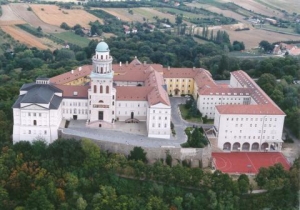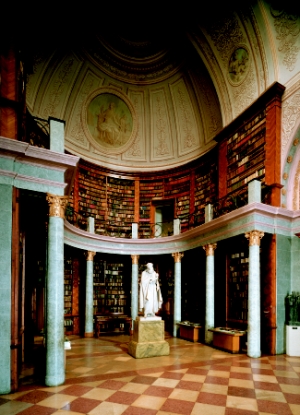Popular destinations nearby
Győr,
Sopron,
Bük,
Fertőd,
Kőszeg,
Mosonmagyaróvár,
Pannonhalma,
Szombathely,
Zalaegerszeg,
Celldömölk,
Dunasziget,
Fertőrákos,
Kapuvár,
Nagykanizsa,
Sárvár
|
Town with 3,650 inhabitants about 17 km south of Győr. Wherever you arrive in Pannonhalma from, you will surely see the part of the town called Liget (grove) in the main square, on the upper promenade of which the National Flag was built in 1940 by fine and applied artists István Zászlós and Bandi Schima. In the centre of the town you can find the so-called Small church. The oldest building of the church hill was the military watchtower built in the 13th century, during the Mongol invasion, the remains of which were found in 1734, when the church was rebuilt. It was given its present form in 1959. During the Turkish occupation the watchtower of the reef-like hill was surrounded by walls to make it a fortified place, as it is described on the memorial plaque on the Tower bastion. An interesting fact connected to the present is that the council hall was the service flat of the town-clerk and this way home in his childhood and youth for writer Gyula Hernádi, who was awarded a Kossuth prize. Within a two minutes walk from the centre in the eastern direction it is worth visiting the building complex of the Manor, which was built by the arch-abbey in the 1650s. The manor was extended in 1825. The building complex surrounds four square courtyards, between which tunnel-like passages can be used for passing through. Under the building complex a 50,000 gallon cellar was established, which became the basis of the winery. The flat of writer Sándor Dallos family (his famous novel is Aranyecset Golden paintbrush) used to be here. Pannonhalma was given the rank of town in 2000 and in this year it also became a festival town owing to the Pándzsa Club Association, which, as a young, only one-year-old association at that time, organized a grand, three-day Meeting of Generations Festival, which has been followed by several successful festivals since then. Lodgings in Pannonhalma: Pictures of Pannonhalma
|
Pannonhalma map nagyítása >>
|
|
|
Hungary - Pannonhalma |
|
|
|
||
|
Sunday, 21. December 2025. - 21:31:18 |
||

